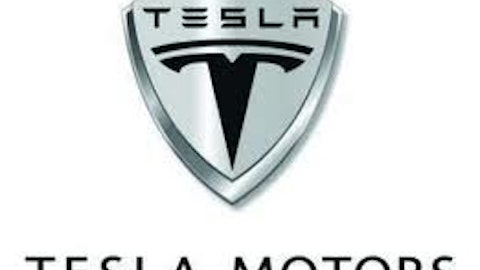Joint ventures hiding growth
Another potential detraction from the investment thesis with Westport is that the two primary business lines are operated as joint ventures. That ownership position prevents the company from recording those segments’ revenue streams; instead, it can only report their operating income, which for now, is far more muted than revenue growth.
The Cummins venture generated revenue growth of 37% and reached $78 million for the second quarter. With the new engine only now hitting production, the venture should see a huge increase in 2014.Cummins will benefit from the JV, but its $17 billion revenue base will only see a small blip from the progress of natural-gas engines.
The Weichai Westport, or WWI, venture in China saw incredible 122% revenue growth on a 133% surge in engine sales. In total, the venture sold 12,410 engines as demand for natural-gas trucks soared in China. Westportonly owns a 35% interest in WWI, so it can only report a portion of that venture’s income and none of its revenue.
Again, investors looking at the headline numbers missed the great strides Westport made in its two primary business lines. The drop in reported revenue was even more notable, with the margins from these ventures sagging as both of them build out production levels. With Weichai Westport’s total operating income virtually flat, most investors missed its revenue gains.
Tesla experience
While Westport continues to struggle toward profitability, investors might want to review how Tesla Motors Inc (NASDAQ:TSLA) fared at a similar stage in its development. Back in 2012, most analysts questioned whether the electric-car maker would ever become profitable. But the company quickly went from substantial losses in 2012 to a small profit this year, and the stock soared.
The key is that Tesla was closer to actual vehicle production than Westport, whose much-hyped CWI engine only hit production last month. Another distinction is that consumers could more quickly adopt a Tesla car than a fleet operator could transition to natural-gas engines. But once this shift within the trucking industry gains momentum, Westport and the CWI joint venture might see rapid adoption.
Bottom line
As with most technology development firms, eventually it becomes time for the technology to prove itself. The low domestic natural-gas prices, (that give Westport an advantage), may not last forever. The Cummins Westport engine needs to be a game-changer, and now that production has finally started; all signs indicate it is only a matter of time before the joint venture generates significant income for Westport.
While cash is a major concern, the fact that Westport’s main products are now in production should turn the company into a growing machine, if only investors notice the growth of the joint venture. Going forward, investors need to pay attention to bottom-line improvements, not the stagnant top line, as the joint ventures move from development stage to profitable growth. The stock is unlikely to see the type of gains made by Tesla, but with the new Cummins Westport engine likely to fuel additional excitement over natural gas, Westport has the potential to post strong returns.
The article Is Westport Finally Back on Track? originally appeared on Fool.com is written by Mark Holder.
Mark Holder and Stone Fox Capital have no positions in any stocks mentioned. The Motley Fool recommends Cummins, Tesla Motors, and Westport Innovations. The Motley Fool owns shares of Cummins, Tesla Motors, and Westport Innovations.
Copyright © 1995 – 2013 The Motley Fool, LLC. All rights reserved. The Motley Fool has a disclosure policy.




